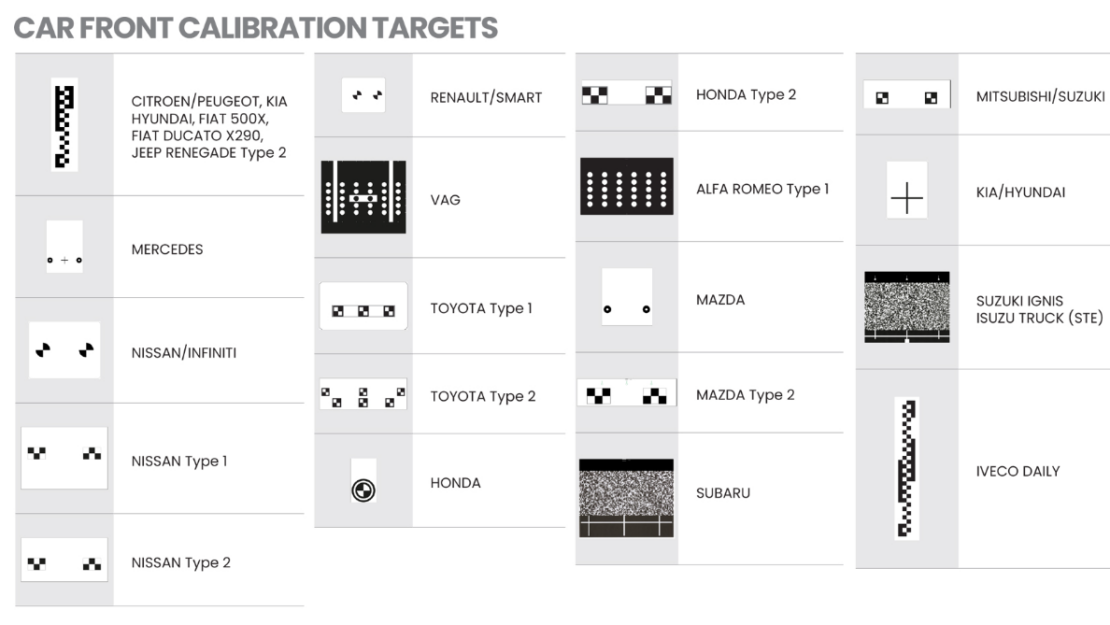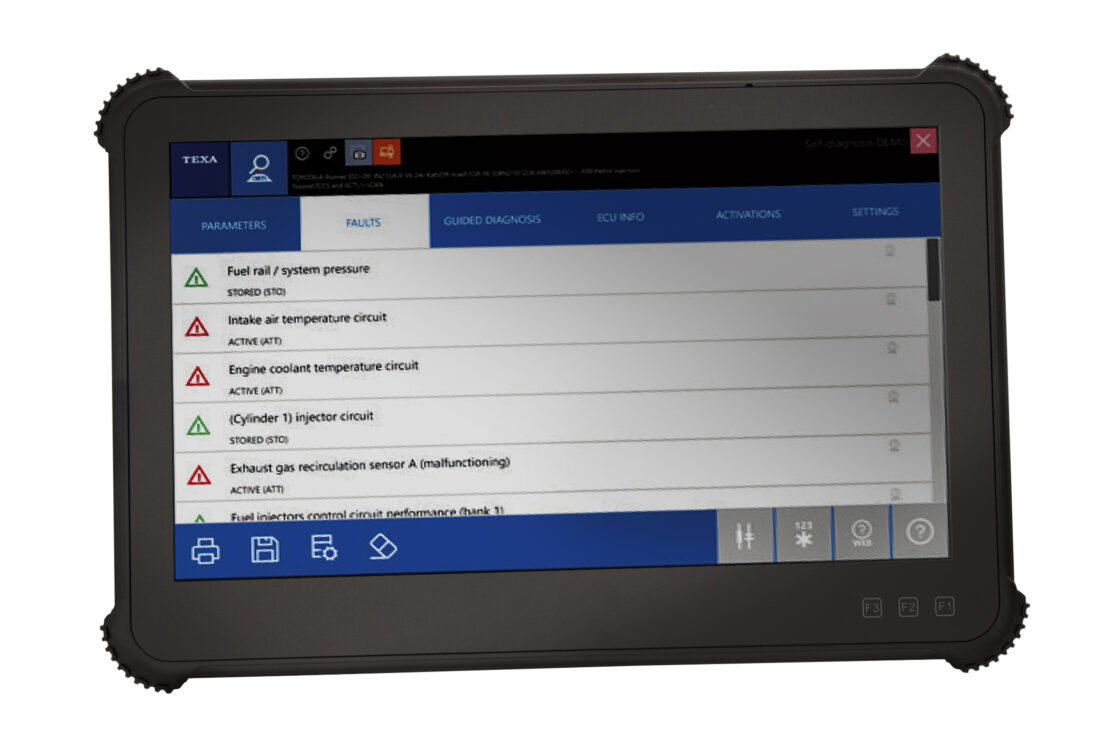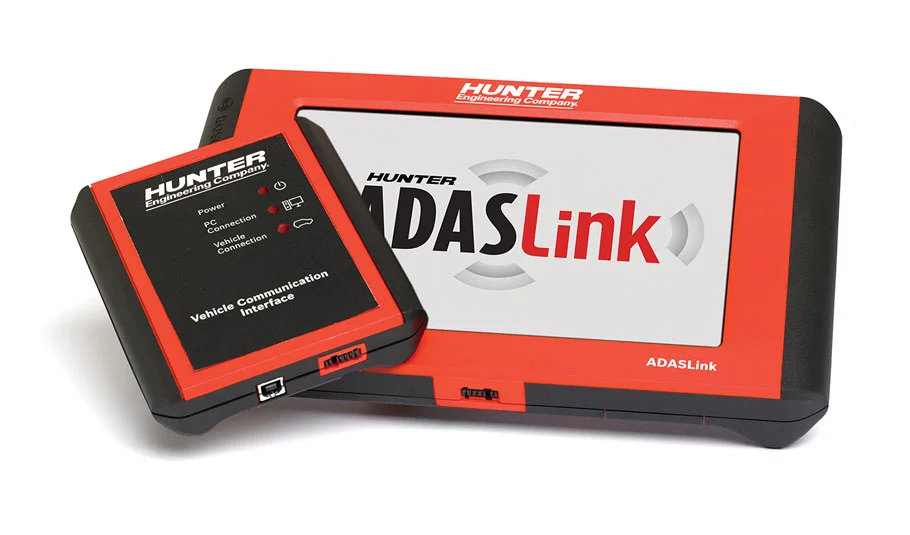
Choosing ADAS Calibration Equipment
A vehicle’s Advanced Driver Assistance System is responsible for lane departure warnings, adaptive cruise control, automatic emergency braking, and more. If a sensor or camera isn’t calibrated correctly, it will impact one or more of these features, potentially jeopardizing the driver’s safety while on the road. ADAS calibration is often performed any time a vehicle’s sensors may have potentially been thrown off, such as after a significant repair or part replacement.
Noting this, selecting the right ADAS calibration system is crucial for your auto repair shop. In this post, we’ll cover which factors to consider when purchasing an ADAS calibration system to ensure you’re properly serving and protecting your customers.
Types of ADAS Calibration Equipment
Several types of equipment are used to perform ADAS calibrations. In many situations, multiple types (like boards and frames) are required to perform the calibration effectively. The primary types of calibration equipment include:
Target Boards

ADAS calibration target boards work by using physical objects (i.e., patterns or markings) to simulate driving situations to test sensors. During calibration, the vehicle’s sensors are aimed at these patterns or markings to calibrate, which helps its sensors calibrate so it can collect the appropriate data for ADAS functions. They’re primarily used on vehicles that have forward-facing cameras, surround-view cameras, and certain radar systems.
Calibration Frames

Calibration frames provide a stable platform for mounting target boards to ensure they’re accurate on a vehicle’s specific geometry. Often, frames ensure extremely accurate distance measurements down to the millimeter. Most calibrations require the use of some type of frame to ensure optimum accuracy.
Diagnostic Tablets

Diagnostic tablets can also help support vehicle calibration in your auto service center. There are many types of diagnostic tablets that you can select from to help support ADAS calibration and can be used for static and dynamic calibration procedures.
Laser Targets

Laser targets help create reference points and lines. Just think of laser targets as visual guides that are used to help properly align vehicle sensors with calibration boards. Lasers and calibration boards work together to help ensure the ADAS system can correctly interpret distances and various positioning of any objects that are on the road. Calibration targets work by reflecting the laser beam back to the equipment to ensure that measurements are precise.
Factors to Consider When Selecting Equipment
Calibration Method
A big decision you’ll have to make involves the type of calibration you want to perform. There are two main types of calibration: static and dynamic. Fitting to the name, static ADAS calibration is performed on a vehicle that is non-moving/ stationary, while dynamic calibration is performed as a vehicle is in motion.
Static calibration is typically faster, cheaper, and carried out in a controlled environment. However, it also tends to be less accurate and isn’t suitable for all types of ADAS sensors. Dynamic calibration, conversely, is more accurate and effective with just about any sensor. However, it’s more time-consuming, costs more, and is largely contingent on the weather for accuracy since it’s done in a real-world driving environment and not in the service bay.
Available Space
The amount of space you have in your auto service center should also dictate the type of calibration method you use and the equipment you purchase. For instance, static calibration requires a level floor, adequate lighting, and an area without any obstructions to ensure proper positioning of targets. Additionally, it’s important to also consider the size of the vehicles that your shop will need to support for service.
Supported Vehicles
As we noted above, it’s important to consider the size of the vehicles that your shop will need to support for ADAS service. Factors like tire and wheel size can specifically impact how well ADAS equipment performs, as such factors can alter the sensor’s perspective.
Setup & Integration
The typical vehicle calibration process can take anywhere from one to three hours, and ADAS equipment can take anywhere from 30 minutes to more than an hour to set up, depending on the vehicle’s calibration needs and the nature of the equipment you’re using in your shop. Usually, only one technician is required for ADAS calibration. However, more complex dynamic calibrations may require two.
Cost
Lastly, there’s going to be an upfront cost to acquire any type of calibration equipment, which can range in the tens of thousands of dollars. Aside from this initial upfront cost, there are also ongoing costs related to software updates and the maintenance of equipment that you need to consider.
Keep in mind that ADAS calibration services can be a significant money maker for your shop, with typical service costing anywhere from a few hundred dollars to over $1,000. So, while your budget is an important consideration when purchasing equipment, ensuring that the equipment you purchase is of high quality and successfully able to service all vehicles is important, too.
Our Recommendation: Hunter ADASLink®

If you’re looking to add ADAS calibration as a service to your garage or upgrade your current calibration equipment, we suggest investing in the ADASLink® from Hunter Engineering.
ADASLink is a full-diagnostic, portable scan tool that helps guide technicians through the calibration process of more than 25 million vehicles in a clear, step-by-step manner to meet OE requirements. It’s easy to use, comprehensive, efficient, and can be paired with something like Hunter’s Hawkeye Elite wheel alignment system. Plus, since the ADASLink primarily consists of a software-driven tablet, technicians can use it for both dynamic and static calibrations.
Get More Tips & Advice From Allied, Inc.
Since our founding, Allied, Inc. has been committed to helping shop owners across the United States find the right equipment for ADAS calibrations, wheel alignments, tire changes, and other services.
Please visit our website for more buyers’ guides and resources, or contact us today to speak with a product specialist.
